FEFCO Box Style Guide
- - What is the FEFCO box style guide
- - Benefits of the FEFCO system
- 01 - Commercial rolls and sheets
- 02 - Slotted-type boxes
- 03 - Telescope-type boxes
- 04 - Folder-type boxes and trays
- 05 - Slide-type boxes
- 06 - Rigid-type boxes
- 07 - Dy-glued cases
- 09 - Interior fitments
- - International Fibreboard Casecode
- - Effective closure of boxes
What is the FEFCO box style guide
You may well be wondering who FEFCO is and what their style guide is or represents. FEFCO, or ‘The European Federation of Corrugated Board Manufacturers’, is an international, non profit organization which acts on behalf of the corrugated cardboard industry.
The FEFCO style guide is a simple and effective system created by FEFCO to discern between universal styles of corrugated boxes. Each box within FEFCO’s guide has a unique four digit code which allows it to be differentiated from the next. The first two digits of FEFCO’s code represent a box’s style category, whilst the second two digits represent a unique box style within a category. 0502, for example, is the code attached to the second style of box in the 05 category (Slide Type Boxes).
The section below contains all the box styles, constructions and design details relevant to Kite Packaging products, as stated by FEFCO (The European Federation of Corrugated Board Manufacturers)
Benefits of the FEFCO system
The FEFCO style guide is a tried and tested system which allows a user to easily discern between different styles of corrugated boxes. The FEFCO system boasts proven, successful designs and considers material efficiency. FEFCO products therefore minimise waste and subsequently costs. The organization’s numerical code is universal and dissolves any language barriers that may hinder the production or buying process. It also greatly improves a company's inventory management capabilities.
Browse Kite’s range of corrugated cardboard products suitable for commercial packaging usage across a range of industries click here
FEFCO : 01 Commercial rolls and sheets
Fefco 0100
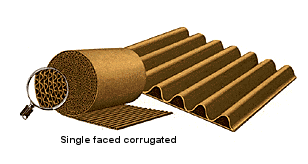
Fefco 0110
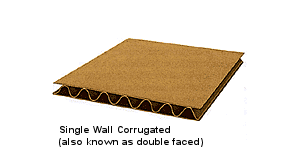
FEFCO : 02 - Slotted type boxes
These consist of one piece with a glued, stitched or taped manufacturer's joint and top and bottom flaps. They are shipped flat, ready to use and require closing using the flaps provided.
Fefco 0200
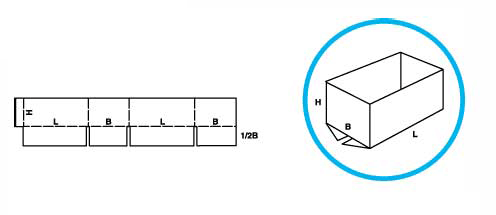
Fefco 0201
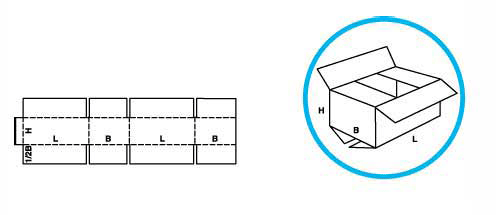
Fefco 0202
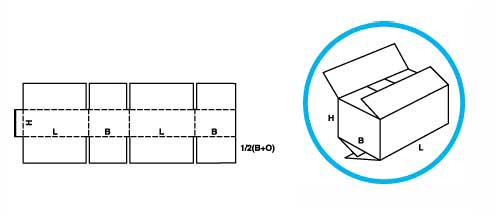
Fefco 0203
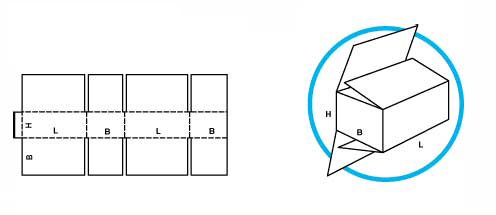
Fefco 0204
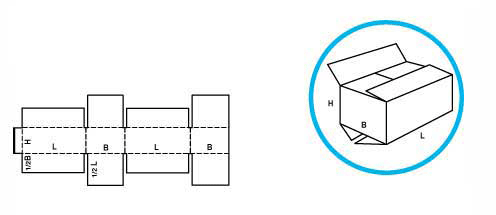
Fefco 0205
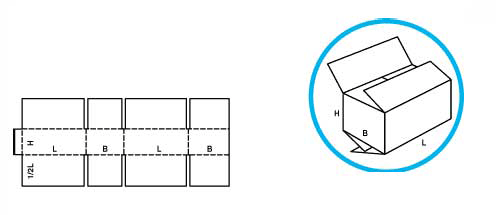
Fefco 0206
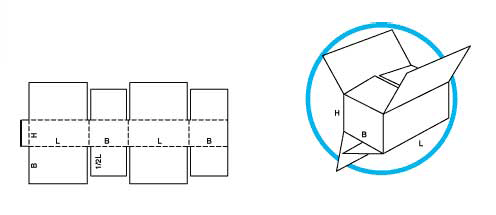
Fefco 0207
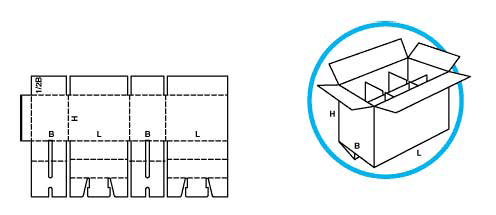
Fefco 0208
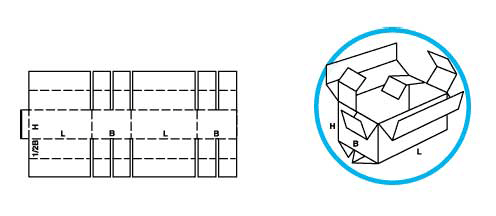
Fefco 0209

Fefco 0210
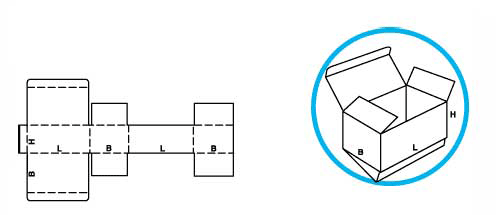
Fefco 0211
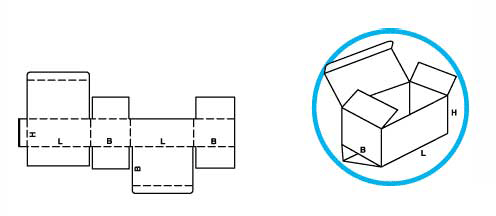
Fefco 0212
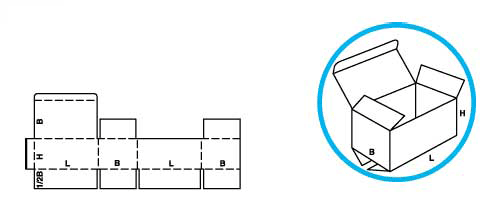
Fefco 0214
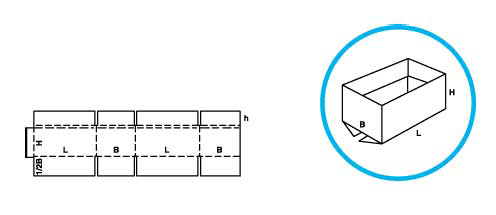
Fefco 0215
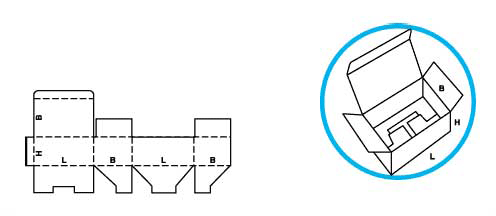
Fefco 0216
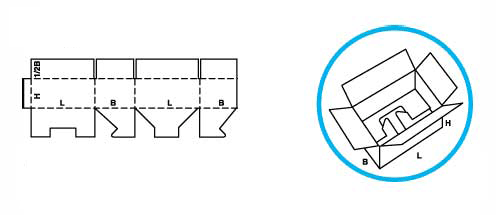
Fefco 0217
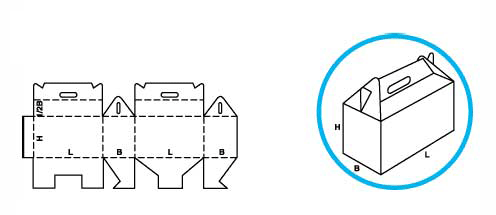
Fefco 0218
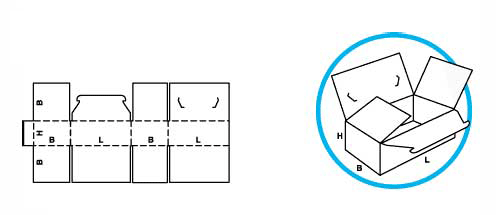
Fefco 0225
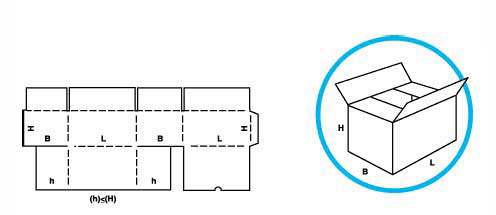
Fefco 0226
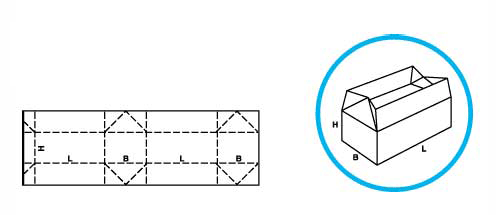
Fefco 0227

Fefco 0228
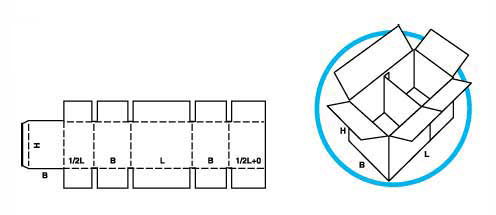
Fefco 0229

Fefco 0230
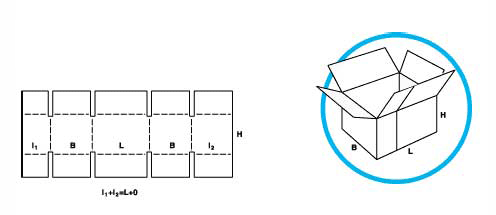
Fefco 0231
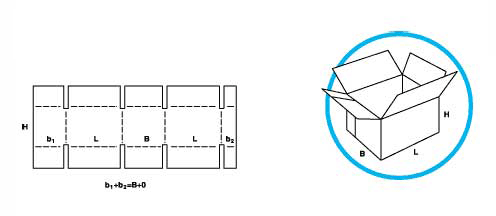
FEFCO : 03 - Telescope type boxes
These consist of more than one piece and are characterised by a lid and/or bottom telescoping over the body of the box.
Fefco 0300
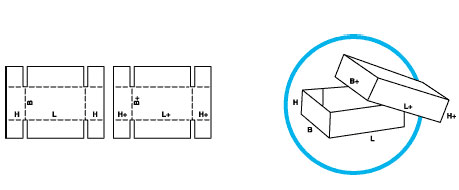
Fefco 0301
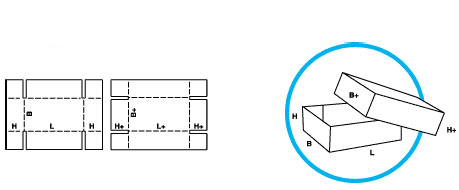
Fefco 0302
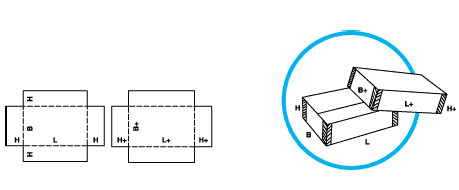
Fefco 0303
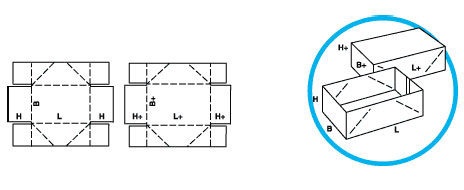
Fefco 0304
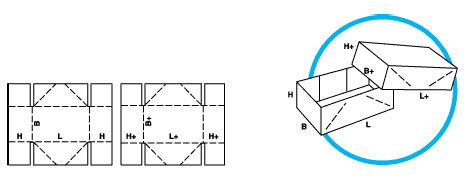
Fefco 0306

Fefco 0307

Fefco 0308

Fefco 0309

Fefco 0314
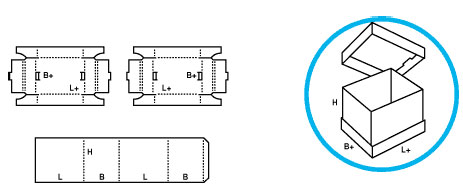
Fefco 0320

Fefco 0321
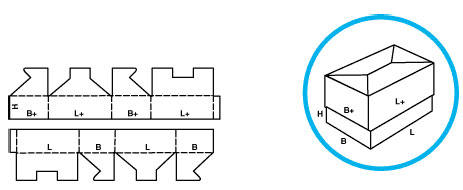
Fefco 0322
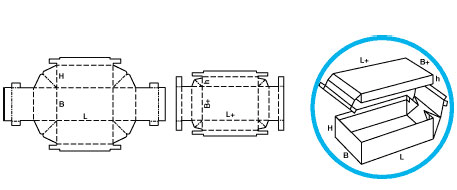
Fefco 0323
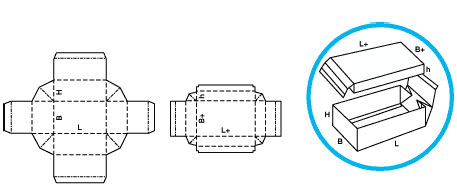
Fefco 0325

Fefco 0330
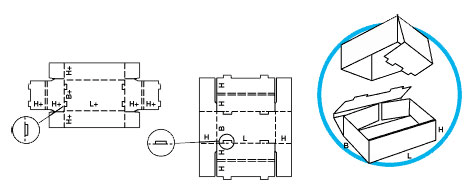
Fefco 0331
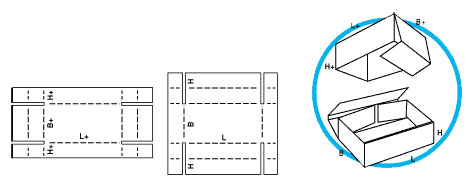
Fefco 0350
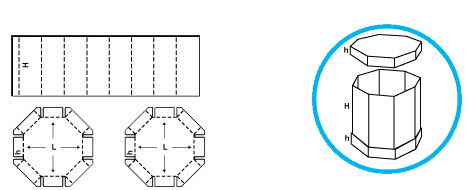
Fefco 0351

Fefco 0352
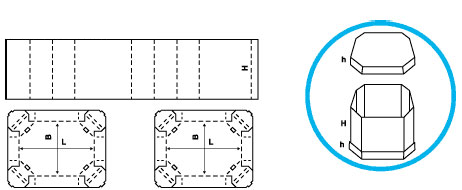
FEFCO : 04 - Folder-type boxes and trays
These usually consist of only one piece of board. The bottom of the box is hinged to form two or all side walls and the cover. Locking tabs, handles, display panels etc., can be incorporated in some designs.
Fefco 0400
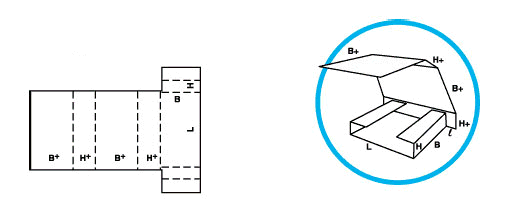
Fefco 0401
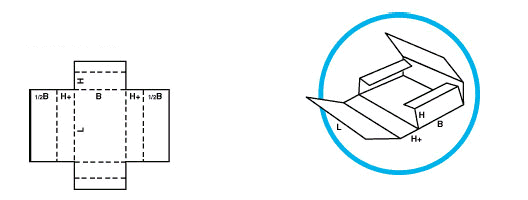
Fefco 0402
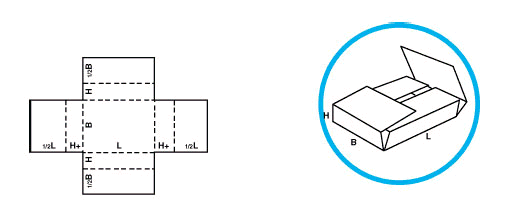
Fefco 0403
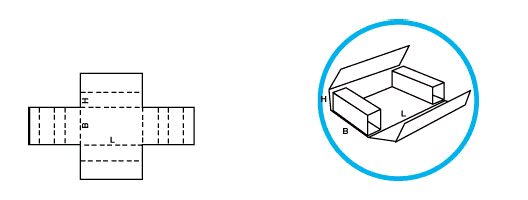
Fefco 0404
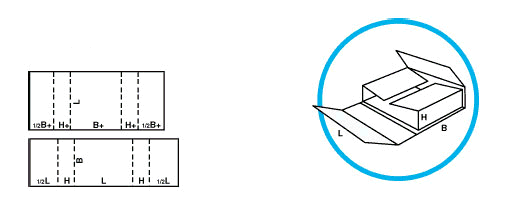
Fefco 0405
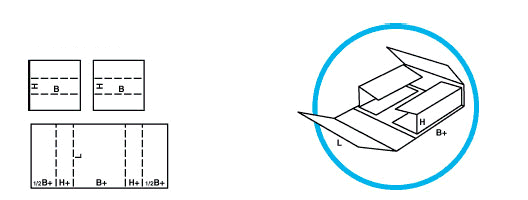
Fefco 0406
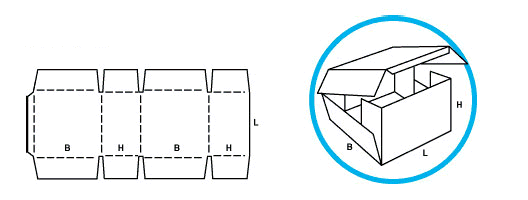
Fefco 0409

Fefco 0410
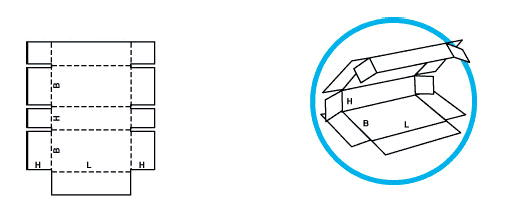
Fefco 0411
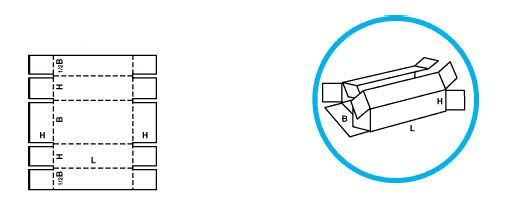
Fefco 0412
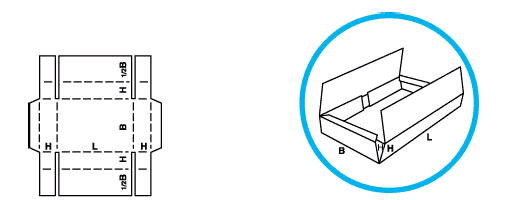
Fefco 0413
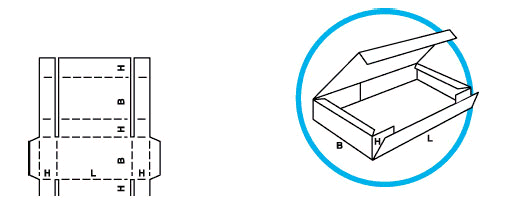
Fefco 0415
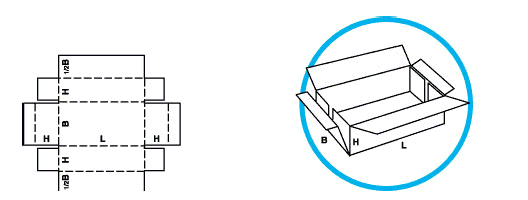
Fefco 0416
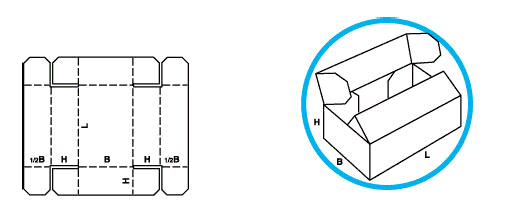
Fefco 0420

Fefco 0421
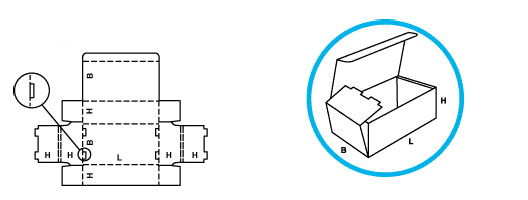
Fefco 0422
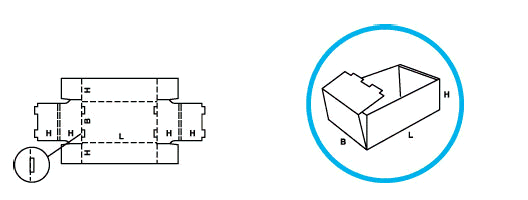
Fefco 0423
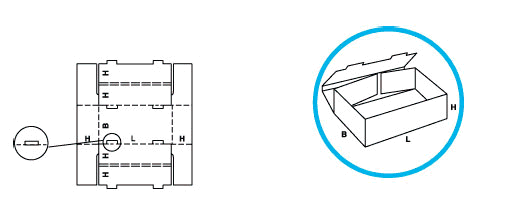
Fefco 0424
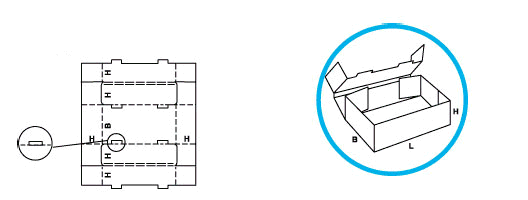
Fefco 0425
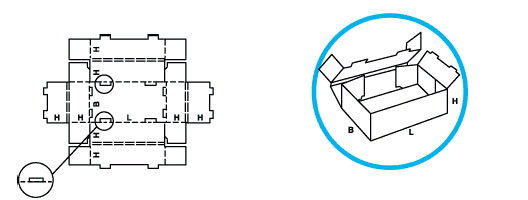
Fefco 0426
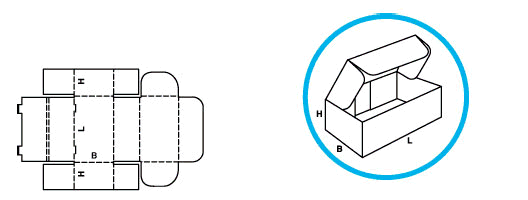
Fefco 0427
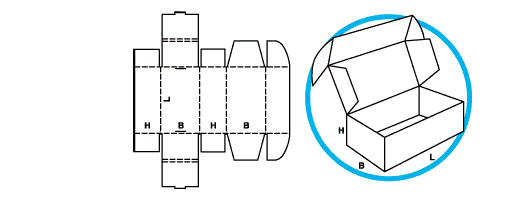
Fefco 0428
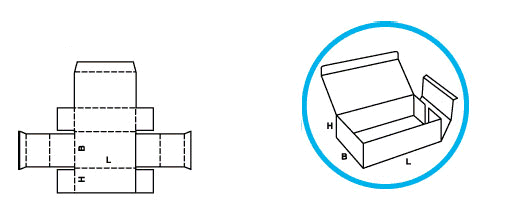
Fefco 0429

Fefco 0430
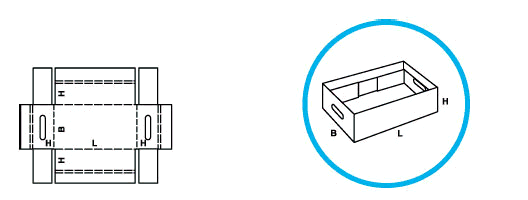
Fefco 0431
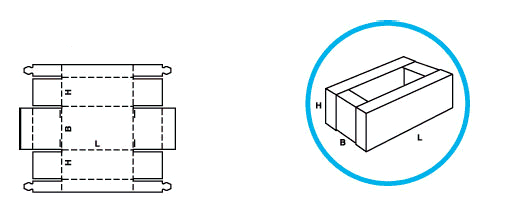
Fefco 0432
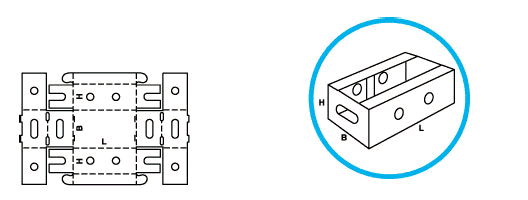
Fefco 0433
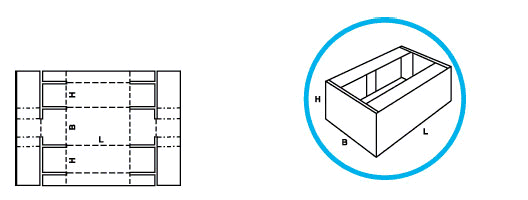
Fefco 0434
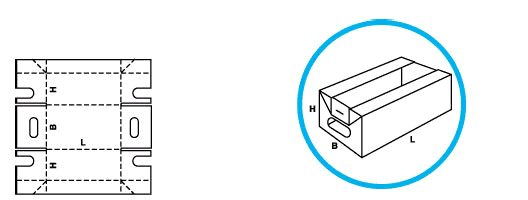
Fefco 0435
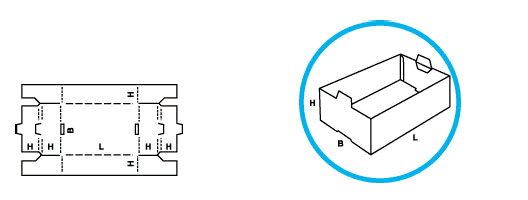
Fefco 0436
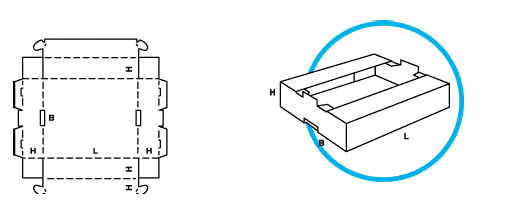
Fefco 0437
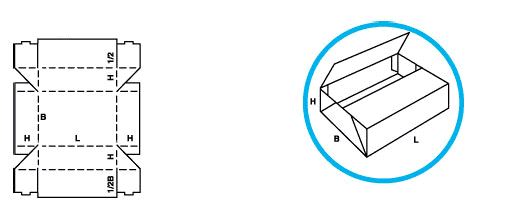
Fefco 0440

Fefco 0441

Fefco 0442

Fefco 0443
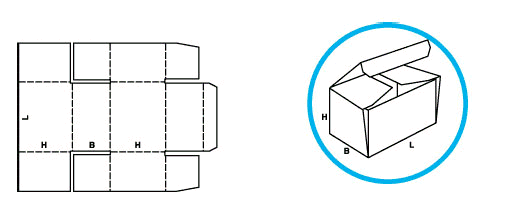
Fefco 0444
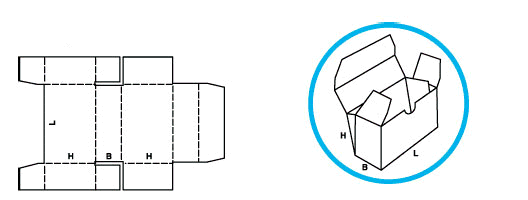
Fefco 0445
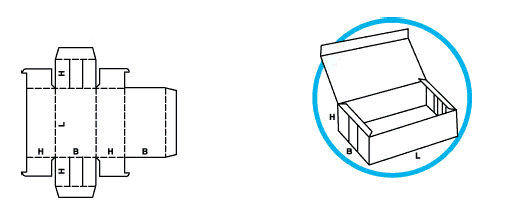
Fefco 0446
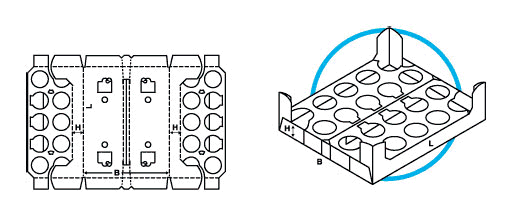
Fefco 0447
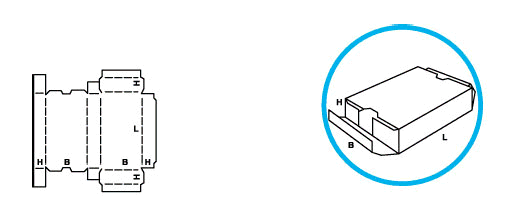
Fefco 0448
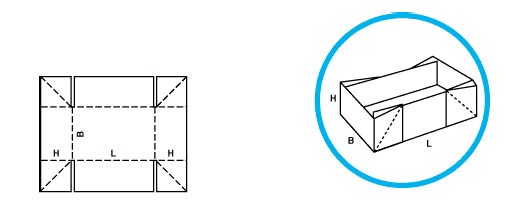
Fefco 0449
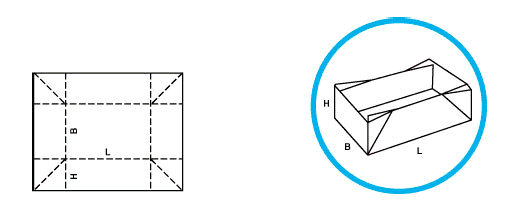
Fefco 0450
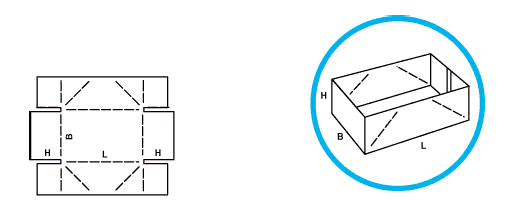
Fefco 0451
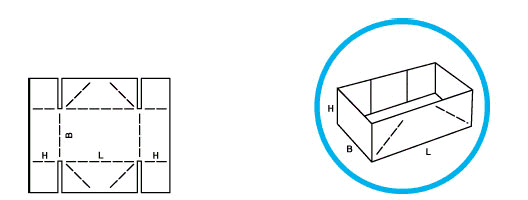
Fefco 0452

Fefco 0453
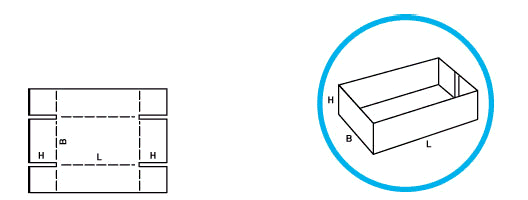
Fefco 0454

Fefco 0455
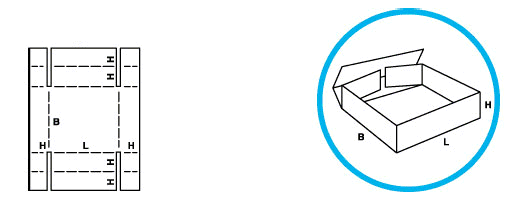
Fefco 0456
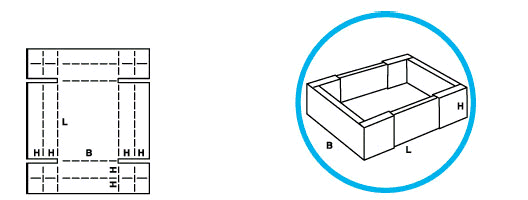
Fefco 0457
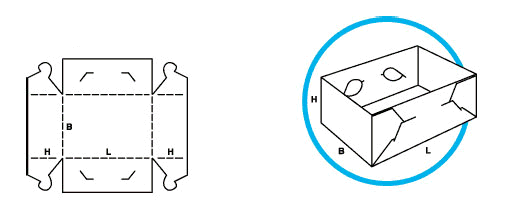
Fefco 0458

Fefco 0459

Fefco 0460
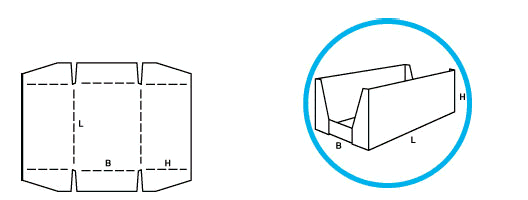
Fefco 0470
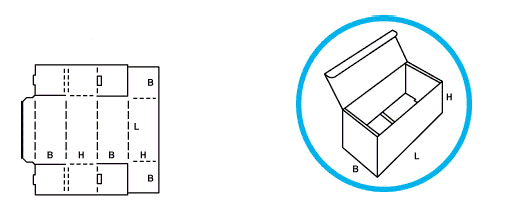
Fefco 0471
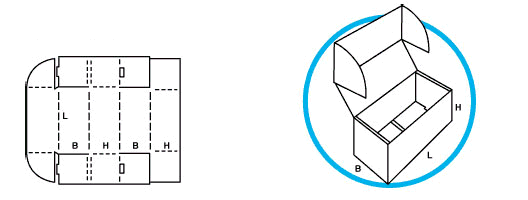
Fefco 0472
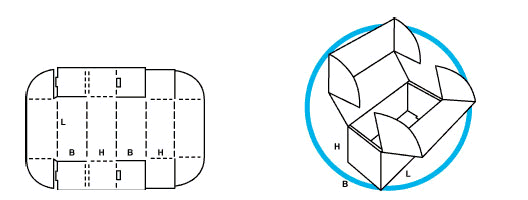
Fefco 0473
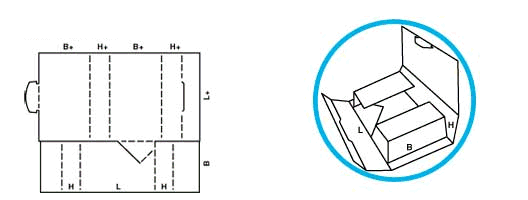
FEFCO : 05 - Slide type boxes
These consist of several pieces of liners and sleeves sliding in different directions into each other. This group also includes outside sleeves for other cases.
Fefco 0501
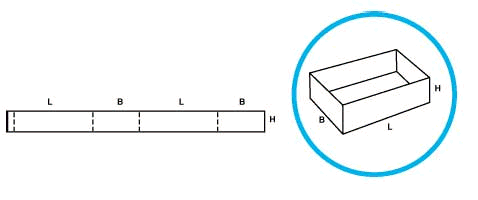
Fefco 0502
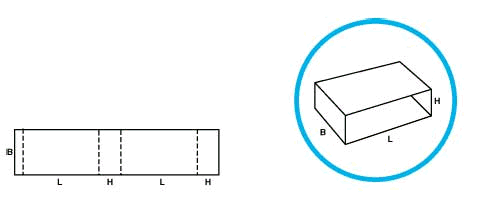
Fefco 0503
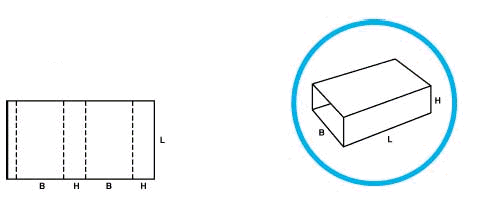
Fefco 0504
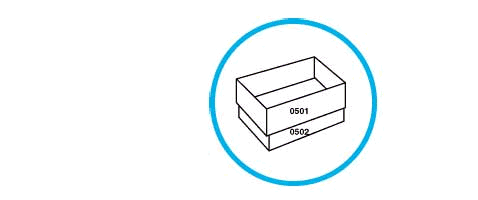
Fefco 0505
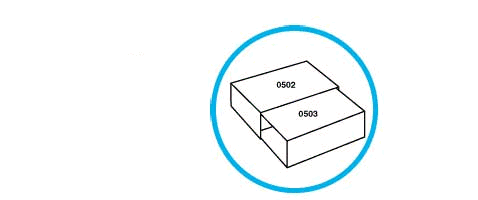
Fefco 0507

Fefco 0509
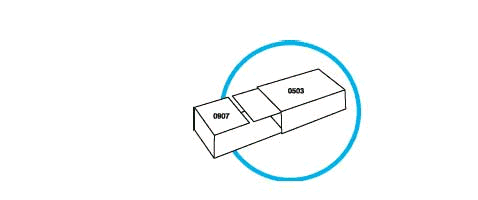
Fefco 0510
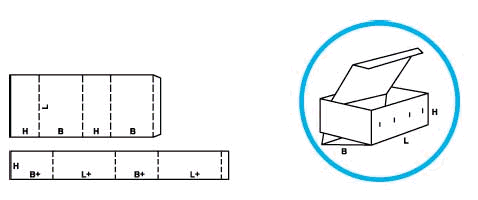
Fefco 0511
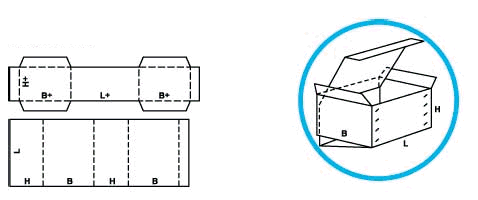
Fefco 0512
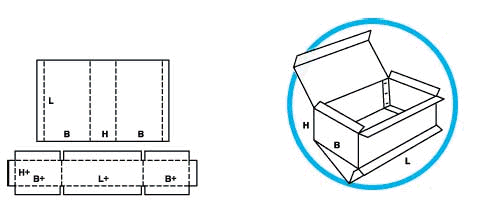
FEFCO : 06 - Rigid type boxes
These consist of two separate end pieces and a body and require stitching or a similar operation before they can be used.
Fefco 0601
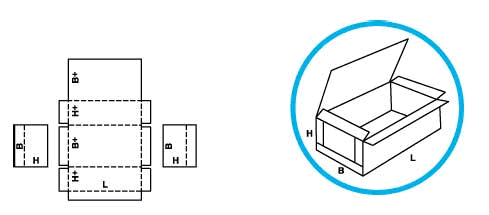
Fefco 0602
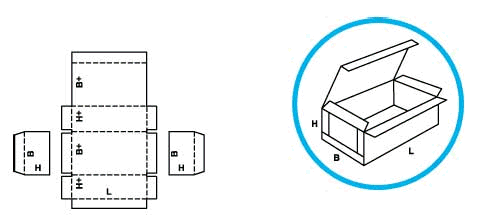
Fefco 0605
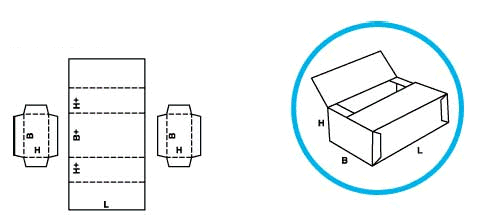
Fefco 0606
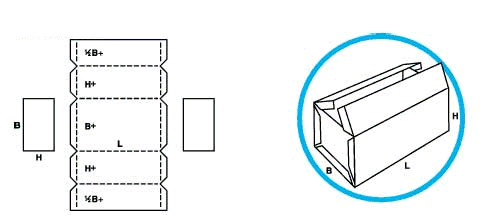
Fefco 0607
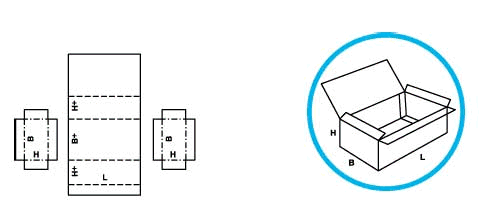
Fefco 0608
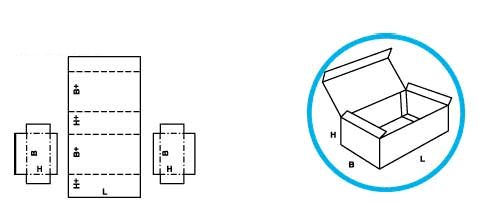
Fefco 0610
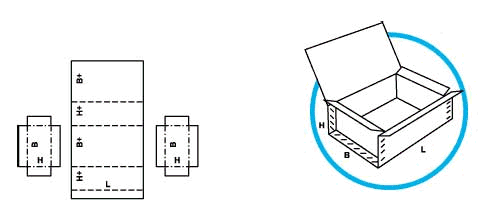
Fefco 0615
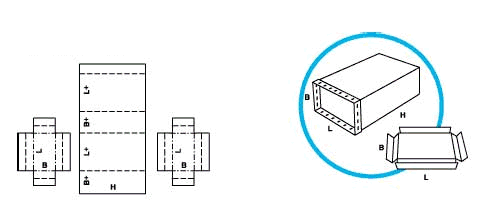
Fefco 0616
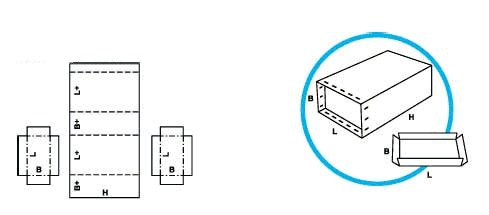
Fefco 0620
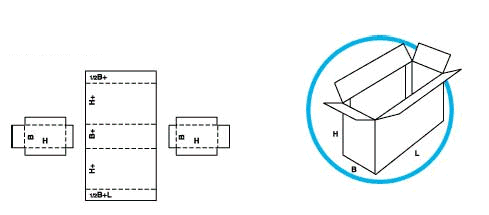
Fefco 0621
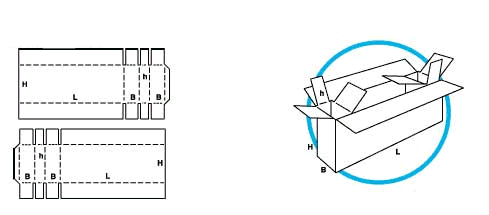
FEFCO : 07 - Dy glued cases
These consist of basically one piece, are shipped flat and ready to use by simple setting up.
Fefco 0700

Fefco 0701
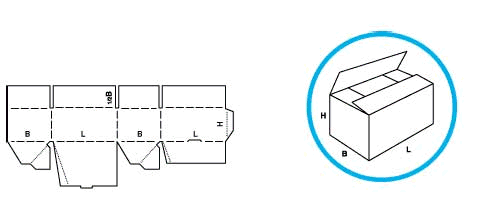
Fefco 0703
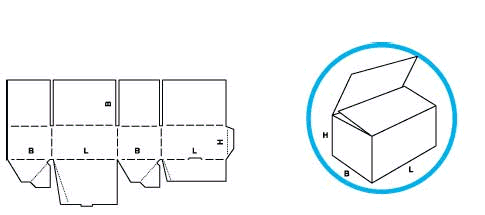
Fefco 0711
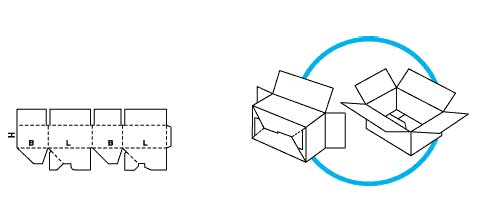
Fefco 0712
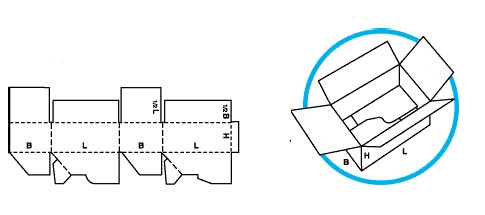
Fefco 0713
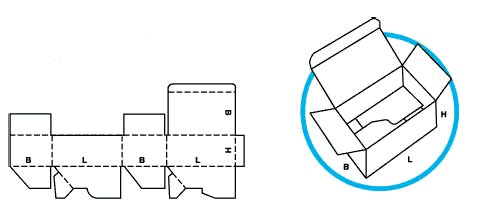
Fefco 0714
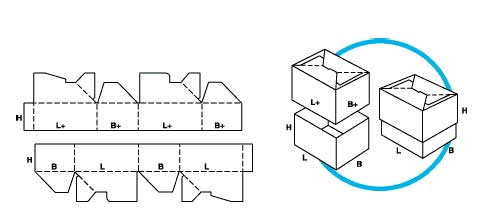
Fefco 0715
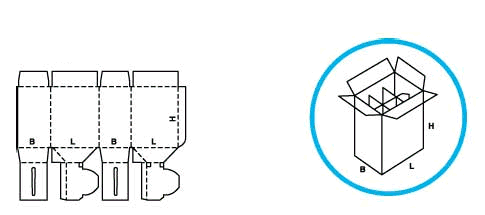
Fefco 0716
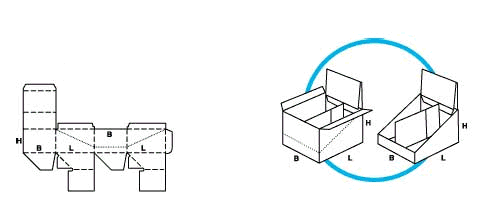
Fefco 0717
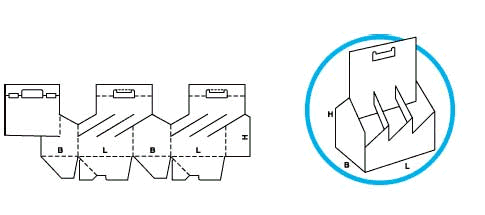
Fefco 0718

Fefco 0747

Fefco 0748
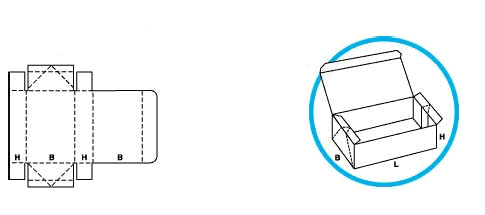
Fefco 0751
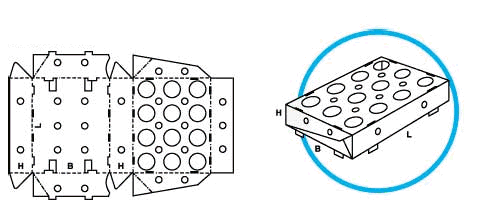
Fefco 0752
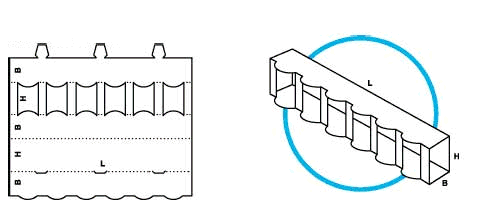
Fefco 0759
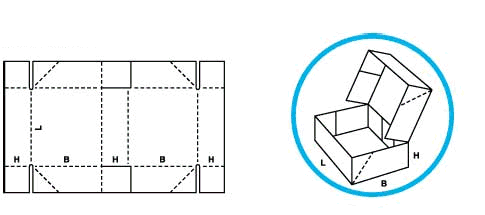
Fefco 0761
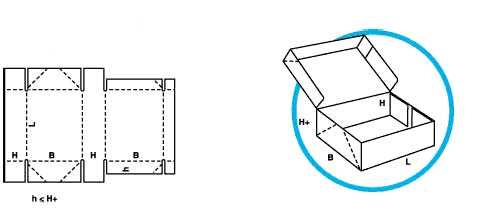
Fefco 0770
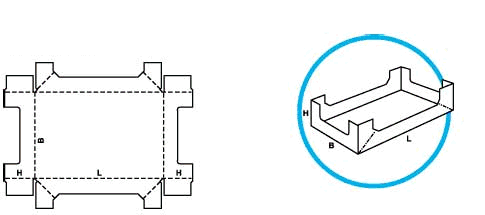
Fefco 0771
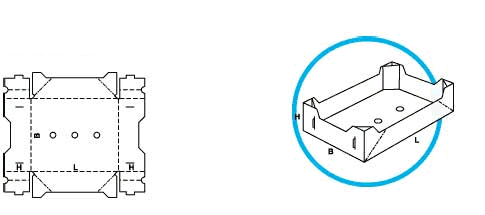
Fefco 0772

Fefco 0773
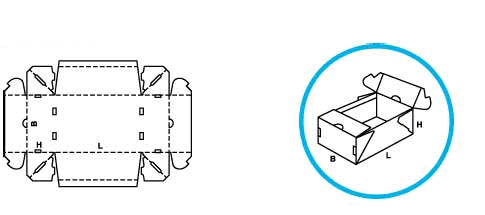
Fefco 0774
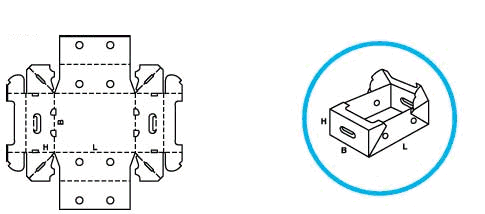
FEFCO : 09 - Interior fitments
Products such as inside liners, pads, partitions, dividers etc, whether tied to Case Design or as singular items. Any shown number of panels is arbitrary and may be increased or decreased as required.
Coding of interior fitments
The following range of interior fitments is coded depending on the number
of panels used, in any combination of shapes (for computer systems).
Fefco 0982/0999
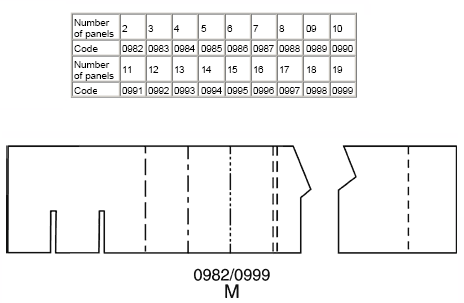
Fefco 0900
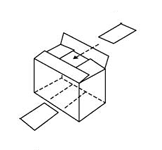
Fefco 0901

Fefco 0902
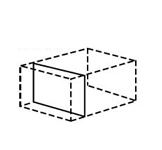
Fefco 0903
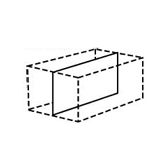
Fefco 0904
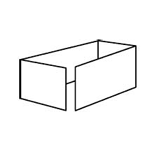
Fefco 0905
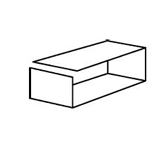
Fefco 0906
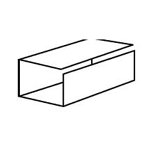
Fefco 0907

Fefco 0908
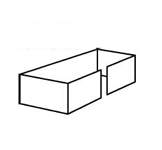
Fefco 0909
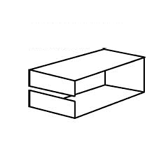
Fefco 0910

Fefco 0911

Fefco 0913
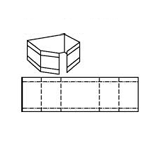
Fefco 0914
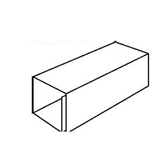
Fefco 0920
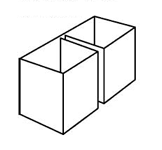
Fefco 0921
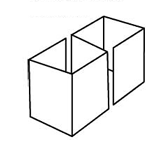
Fefco 0929
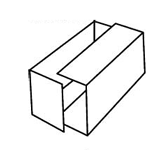
Fefco 0930
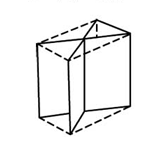
Fefco 0931
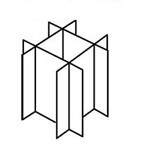
Fefco 0932
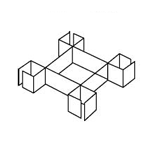
Fefco 0933
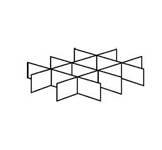
International Fibreboard Casecode
This code which is prepared in collaboration with ESBO (The European Solid Board Organisation), contains a methodical presentation of all existing box design styles, a code number being assigned to each design. As a reference document, the code is used world-wide and it has been adopted by the United Nations.
Symbols used in drawings and computer systems.

Case dimensions
Unless otherwise specified all dimensions are expressed as internal dimensions in mm as follows:
Length (L) x Breadth (B) x Height (H)
| Length (L) | = the longer dimension at the opening |
| Breadth (B) | = the shorter dimension at the opening |
| Height (H) | = the dimension from the top of the opening to the base |
The dimensions L B H are specified in each description of the case construction, for some models the numerical value of B can exceed the numerical value of L. Dimensions should be measured under standard climate conditions, on the flat blank from the centre of crease bearing the thickness of the material in mind.
For telescope type boxes the height (h) of the upper part (lid) should be given as a fourth measurement after an oblique stroke, i.e.
| 355 | x | 205 | x | 120/40 | mm |
| (L) | (B) | (H) (h) |
For cases with overlapping outer flaps the length of the area of overlapping (o) should be given as a fourth measurement after an oblique stroke. i.e.
| 355 | x | 205 | x | 120/ 40 | mm |
| (L) | (B) | (H) (o) |
Sheet dimensions
Unless otherwise specified, the dimensions of a corrugated sheet are expressed in mm as follows:
- 1st dimension x 2nd dimension
- 1st dimension=along the glue lines
- 2nd dimension =across the glue lines
Style versions
Several case types may have derived versions without the necessity to create a new style. In this case a suffix should be added to the basic style number separated by a dash.
- Example 0201-2
- A version maybe unique to individual manufacturers.
Combination of types
The construction styles shown are of the basic types of fibreboard cases. If the ultimate construction is a combination of two or three basic models. e.g. flap arrangements, they may also be described as follows: Top flaps as 0204, Bottom flaps as 0215 This type may also be described as 0204/0215 (Top flaps. Bottom flaps).

Styles and the manufacturers joint
The drawing style layouts as shown in this Code may need to be re-arranged depending on the Manufacturers Joint chosen. Some styles may have a Manufacturers Joint which maybe glued, stitched or taped. A glued or stitched Joint may be an extension of either the short or the long panel. The sketches show how these would be indicated on a drawing:

This applies to all designs in this Code.
Manual of Automated erection
Each design style includes one of the following indications
M - usually manual erection
A - usually automated erection
M/A - can be either manual or automated
M+A - requires a combination of both
These indications are based on current practice and are intented to give additional information to specifiers and users Some manually erected cases can be closed automatically (e.g : 0216 or 0712)
Effective Closure Of Boxes
Correct and effective closure of the packages is as important as the packaging construction itself.
The following methods of closure are possible either singly or in combination:
- by gluing, cold or hot
- by taping
- by interlocking
- by stiching
Closure by taping
This can be done according to the example shown

Closure by stiching
This can be done according to the example shown:

- - What is the FEFCO box style guide
- - Benefits of the FEFCO system
- 01 - Commercial rolls and sheets
- 02 - Slotted-type boxes
- 03 - Telescope-type boxes
- 04 - Folder-type boxes and trays
- 05 - Slide-type boxes
- 06 - Rigid-type boxes
- 07 - Dy-glued cases
- 09 - Interior fitments
- - International Fibreboard Casecode
- - Effective closure of boxes
